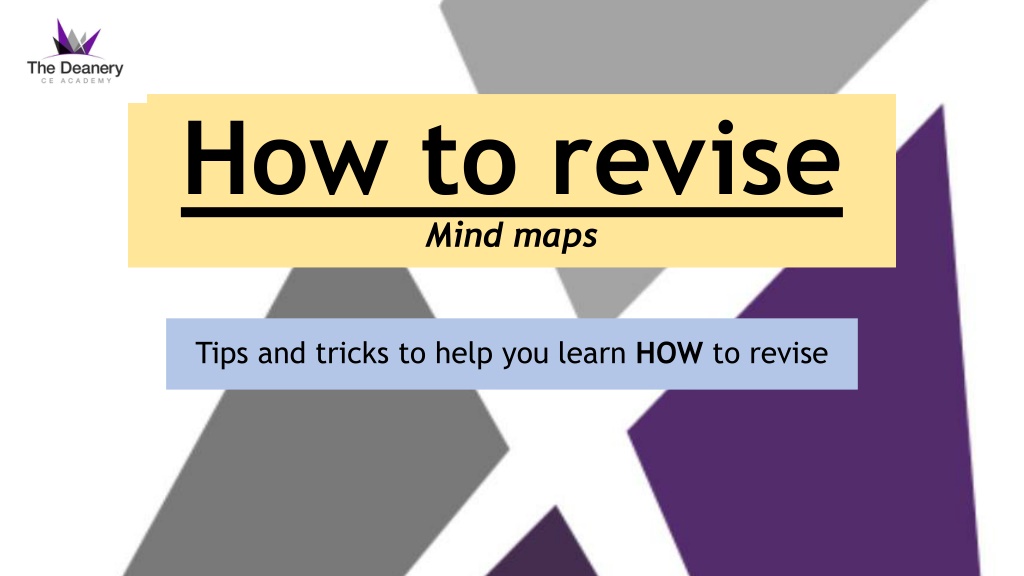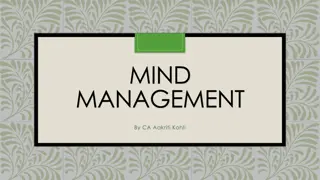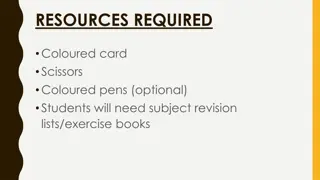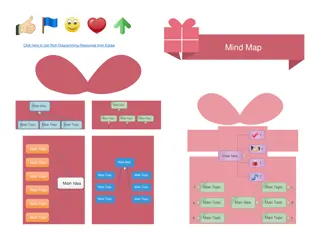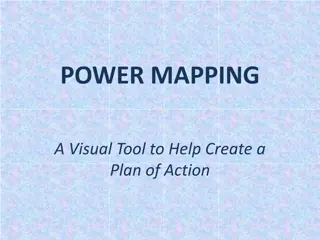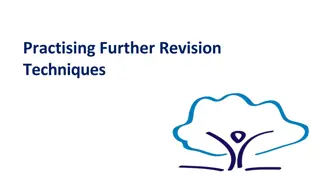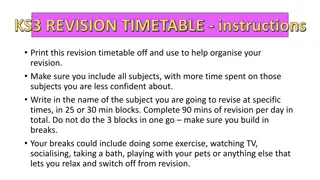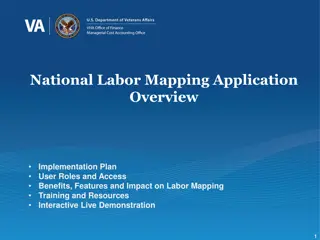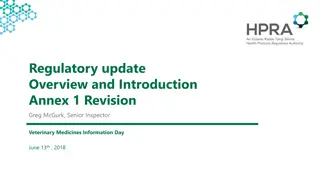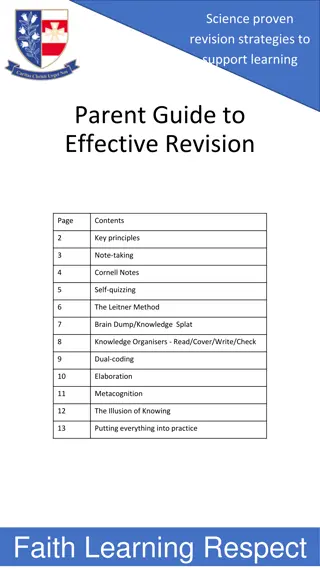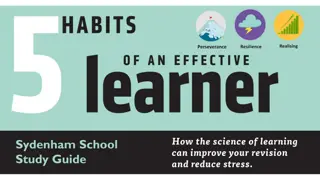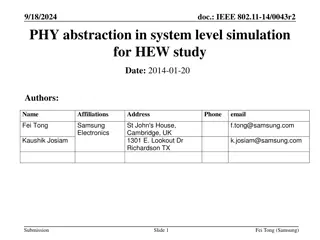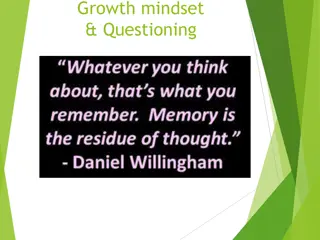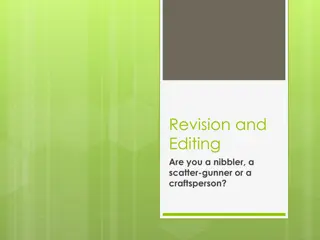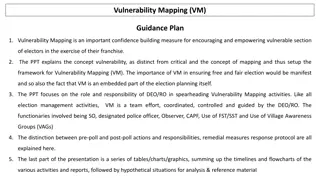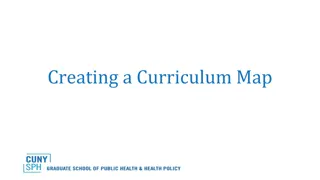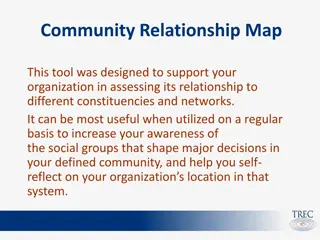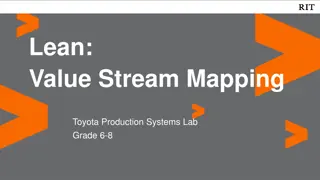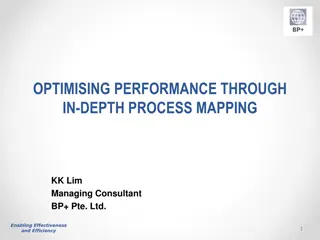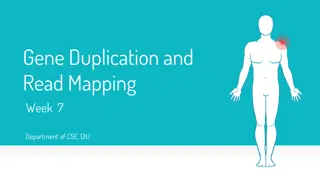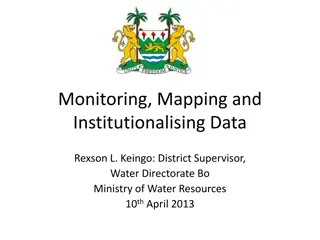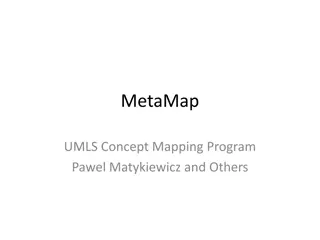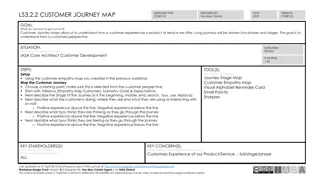Effective Mind Mapping Techniques for Successful Revision
Utilize mind maps as an active revision technique to enhance learning and retention. This method involves structuring information visually, connecting key concepts, and engaging in higher-level thinking skills. By following step-by-step guidance and incorporating images, you can create comprehensive mind maps for various subjects, improving your study sessions significantly.
Download Presentation

Please find below an Image/Link to download the presentation.
The content on the website is provided AS IS for your information and personal use only. It may not be sold, licensed, or shared on other websites without obtaining consent from the author. Download presentation by click this link. If you encounter any issues during the download, it is possible that the publisher has removed the file from their server.
E N D
Presentation Transcript
How to revise Mind maps Tips and tricks to help you learn HOW to revise
Prayer Dear Lord, I know you are with me and love me. Give me peace of mind as I prepare for this time of study. Help me to focus on my books and notes, keep me from all distractions so that I will make the best use of this time that is available to me. Amen
Passive vs Active Reading notes and highlighting key information make us FEEL like we re doing revision BUT it requires very little brain power! We say it is PASSIVE. In order to remember things long term, we need to DO something more ACTIVE.
Examples of Active Revision Techniques Mind Maps Flash Cards Answering Questions and checking your answers Teaching someone else
This weeks focus Mind Maps Step 1 Pick a topic to revise. Write the topic title in the centre of your page Step 2 The main ideas that make up the topic should be represented by thick branches that spread out. Think of these as headings Step 3 Create smaller sub-branches which extend out from every branch. Think of these as sub-headings. Step 4 At the end of each branch, write out one key word or concept. This will make it easier to remember key concepts during revision. Step 5 Find images or draw pictures which illustrate your ideas and pop them onto key areas in your diagram. Step 6 Try to find connections between the different branches. If you can find links this is a higher level thinking skill and will help you with more complex questions
Your turn... Make a really quick mind map for the subjects you study (5 mins) Start with Subject s at the centre Do large branches for the main headings e.g. Maths, English, PE, RE, etc Then think about what you would put on the smaller branches Teachers? Topics you have learnt? Can you link any branches?
What next? For the rest of this week you will be doing 2 mind maps in each review session Pick the subjects you are finding it most difficult to revise for Find the Revision Lists for those subjects on My Learning Homework complete a Mind Map for each of your subjects and place them in your Revision Folder. Your review tutor will ask to see your Revision Folder and will expect to see it bursting with Mind Maps!
How to revise from a mind map Read IT Cover IT Rewrite IT How much can you do from MEMORY? This will tell you how much you actually remember If you don t remember very much, you will need to do this again in a few days
